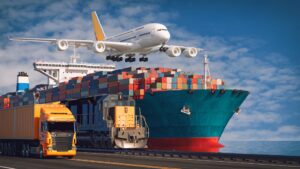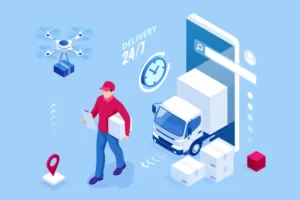Ocean carrier fees are fees charged by shipping companies for shipping goods by sea. They depend on factors such as the size and weight of the cargo, the shipping route, and the type of container used. Some of the most common ocean carrier fees include

Terminal handling charges (THC):
It is the fees charged by terminals for handling containers and cargo.
Container freight station (CFS) charges:
It is a payment charged by facilities that handle the consolidation and deconsolidation of cargo.
Documentation fees:
It is the fee for preparing shipping documents such as bills of lading and certificates of origin.
Loading/discharging fees:
It is the fees charged for loading and unloading cargo from vessels.
Security fees:
It is the fees charged for security measures taken to protect cargo during transit.
The Carrier Security charge is to help carriers afford the costs associated with keeping their ISPS code. And, as the shipper levies fees to help pay the costs, so does the terminal. They charge carriers a fee to respect the ISPS coding requirements at the calling port. There is nothing you can do to prevent a fee.
Fuel surcharges:
It is the fees added to account for fluctuating fuel prices.
Surcharges for low-sulphur fuel:
It is the fees added to account for low-sulphur fuels to comply with environmental regulations.
The Low Sulphur Fuel Charge is also known as the Low Sulphur Bunker Surcharge or the Low Sulphur Fuel Surcharge. Regardless of whose name you like, boats travelling through so-called Emission Control Areas must use gasoline with a maximum sulphur level of 0.1%. A significant departure from the industry’s standard 1% concentration gasoline.
Like the CAF taxes, the Low Sulphur Fuel Levy is a mandatory charge.
Congestion surcharges:
It is fees added to account for delays caused by congestion at ports.
Peak season surcharges:
It is the fees added during periods of high demand for shipping services.
The Peak Season Levy is a surcharge designed to help carriers cover operational costs during peak season. The charge only applies to Asian imports. When you are required to pay the Peak Season Surcharge, it is in addition to the already higher base rates charged by carriers during the peak season.
Currency adjustment factor (CAF):
It is the fees added to account for changes in exchange rates.
Detention and demurrage fees:
It is a payment charged for exceeding the allowed time for loading and unloading cargo.
Overweight fees:
It is the fee charged for exceeding the maximum allowed weight of containers.
Transshipment fees:
It is a fee charged for transferring cargo from one vessel to another.
Reefer plug-in fee:
It is a payment charged for plugging in refrigerated containers to maintain temperature-sensitive cargo.
Inland transportation fees:
It is a fee for transporting cargo from the port of origin to the port of destination.
These fees vary depending on the shipping company, the route, and the type of cargo shipped. Shippers must understand the various ocean carrier fees to make informed decisions and form a budget for their shipping costs.
The BAF Factor:
The Low Sulphur Fuel Charge and the BAF Factor are critical components of the IMO 2020.
The Bunker Adjustment Factor is a levy imposed on ship operators to compensate for volatility in fuel costs. It is to reimburse for the additional costs incurred when shipping goods. BAF is calculated in terms of TEUs and varies according to trade routes.
Reduce and avoid expenses on your list of ocean freight surcharges.
Transparency:
To begin, you must build transparency in your supply chain. Doesn’t that seem like an intangible idea everyone is talking about nowadays? So let’s make it more specific.
Why are you seeking transparency? Because transparency let you know what you’re paying for, including any surcharges, where your container is, whether it’s on schedule, and whether you need to take action.

Plan:
Your shipments are already planned. However, you must plan to minimise shipping container fees. Do you have any freights that typically occur during peak season? If this is the case, try shipping before or after peak season to avoid paying the high peak season price.
Tracking:
It is necessary when an unexpected event happens so you can take appropriate action. Either it’s booking a new slot on a vessel, calling the truck company to change the pick-up time, or contacting your customers to inform them that the goods have been delayed.
How to get transparency, automated tracking, and easy planning?
If you wish to follow the advice we’ve given above, you’ll probably want to utilise a program that will help you save money without consuming your time.
You will never have to track your containers again with Custom Crating and Logistics. It’s all taken care of for you with track and trace reports. You’ll also be notified if there is a container event. This way, you’ll always know where your containers are and when they will arrive, allowing you to make modifications if your shipments are early or late. You may also contact clients to keep them pleased and try to negotiate shipping prices with container owners to save money.
Not sure which solution fits your business needs?
Call now at +1 (847) 258-5530

